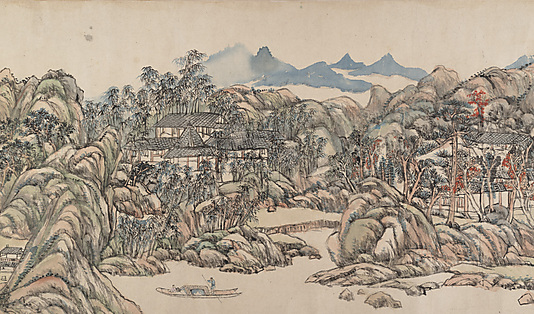It is traditional to think of focal points in a landscape as statues, sculpture, topiary, buildings, follies, water features or plant specimens. But what about topographic foci?
For centuries in Chinese landscape art, mountains (and water) were the emphasis in the landscape. And likewise this was also the emphasis in Chinese landscape design, whether in a large landscape or small garden design.
Rocks and boulders were and still are representative of these features. They provide the same or similar vertical emphasis that a statue, building or folly would, but with a more naturalistic “unbuilt” form.
They are not only foci, but also destination points along a journey. A strong contrast to the level or lower-lying ground plane.
Similarly a “bowl” which is an inversion or depression in the groundplane is at direct contrast with a mounded vertical feature.
In a depression, people are naturally and psychologically attracted to discover the mystery within and then ultimately ascend back up to higher ground.



















